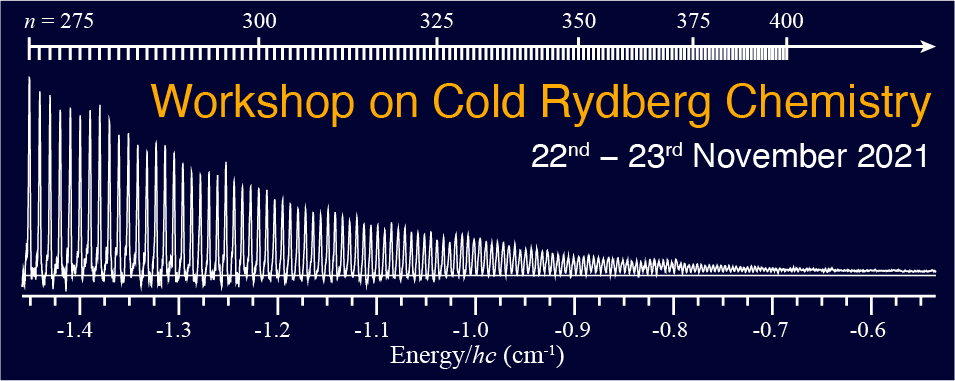Speaker
Description
In cold and ultracold mixtures of atoms and molecules, Rydberg interactions with surrounding atoms or molecules may, under certain conditions, lead to the formation of special long-range Rydberg molecules [1-3]. These exotic molecules provide an excellent toolkit for manipulation and control of interatomic and atom-molecule interactions, with applications in ultracold chemistry, quantum information processing and many-body quantum physics.
In this talk, we will first discuss ultralong-range polyatomic Rydberg molecules formed when a heteronuclear diatomic molecule is bound to a Rydberg atom [3,4]. The binding mechanism appears due to anisotropic scattering of the Rydberg electron from the permanent electric dipole moment of the polar molecule. We propose an experimentally realizable scheme to produce these triatomic ultralong-range Rydberg molecules in ultracold KRb traps, which might use the excitation of potassium or rubidium [5]. By exploiting the Rydberg electron-molecule anisotropic dipole interaction, we induce a near resonant coupling of the non-zero quantum defect Rydberg levels with the KRb molecule in an excited rotational level. This coupling enhances the binding of the triatomic ultralong-range Rydberg molecule and produces favorable Franck-Condon factors.
Another type of ultralong-range Rydberg molecule is formed in collisions between polar molecules in cold and ultracold settings [6]. The interaction of $\Lambda$-doublet nitric oxide (NO) with long-lived Rydberg NO molecules forms ultralong-range Rydberg bimolecules with GHz energies and kilo-Debye permanent electric dipole moments. The description includes both the anisotropic charge-molecular dipole interaction and the electron-NO scattering. The rotational constant for the Rydberg bimolecules is in the MHz range, allowing for microwave spectroscopy of rotational transitions in Rydberg bimolecules. The Rydberg molecules described here hold promise for studies of a special class of long-range bimolecular interactions.
[1] C. H. Greene, A. S. Dickinson, and H. R. Sadeghpour, Phys. Rev. Lett. 85, 2458 (2000).
[2] S. T. Rittenhouse and H. R. Sadeghpour, Phys. Rev. Lett. 104, 243002 (2010).
[3] V. Bendkowsky, B. Butscher, J. Nipper, J. P. Shaffer, R. Löw, and T. Pfau, Nature 458, 1005 (2009).
[4] R. González-Férez, H. R. Sadeghpour, and P. Schmelcher, New J. Phys. 17, 013021 (2015).
[5] R. González-Férez, S.T. Rittenhouse, P. Schmelcher and H.R. Sadeghpour, J. Phys. B 53, 074002 (2020).
[6] R. González-Férez, J. Shertzer and H. R. Sadeghpour Phys. Rev. Lett. 126, 043401 (2021).

